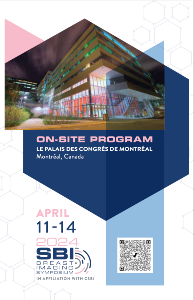The many faces of fat necrosis: A multimodal review and tips to differentiate fat necrosis from new or recurrent malignancy.
ePosters
.jpg)
Preya Shah, MD PhD
Resident Physician
Stanford
Presenter(s)
Background: Fat necrosis is a common benign process that occurs in the breast as a result of damage to adipose tissue. While fat necrosis is often a sequela of surgery, radiation, or trauma to the breast, it may also be idiopathic. The imaging appearance of fat necrosis is manifold and evolves over time with corresponding variable imaging appearances on mammogram, ultrasound, and MRI. Notably, fat necrosis can occasionally mimic malignancy, but malignancy may also be misinterpreted as fat necrosis. Given these factors, it is important for breast imagers to be able to identify the acute, subacute, and chronic imaging appearances of fat necrosis across modalities, learn how to use a multimodality approach to differentiate it from malignancy, and recognize the imaging and clinical factors to avoid unnecessary or prompt appropriate biopsy.
Learning Objectives: The purpose of this presentation is to review the varied and typical imaging features of fat necrosis on mammogram, ultrasound, and MRI. We will highlight the evolution of fat necrosis over time on these modalities and review the clinical and imaging features that are typically benign or atypical, prompting biopsy. Radiologists will learn the wide range of imaging characteristics and tips to troubleshooting equivocal findings on a single modality by correlating with other available current and prior imaging. Radiologists will build intuition on when biopsy of equivocal lesions is appropriate.
Abstract Content/Results: First, will review the pathophysiology of fat necrosis. Then, we will use a pictorial approach to discuss the key imaging features of fat necrosis over time and on multiple modalities – namely mammogram, ultrasound, MRI, and PET-CT. Next, we will use approximately 10 cases that we have collated from our institution to show multimodal appearance of fat necrosis including imaging and/or pathology proof of diagnosis. Using such cases as examples, we will present tips for how to problem solve equivocal cases (including mammographic and prior imaging correlation) and factors that should prompt biopsy (for example, atypical imaging features in conjunction with new clinical or imaging findings or imaging features similar to previously treated malignancy).
Conclusion: Fat necrosis is a benign entity, commonly encountered in breast imaging, that has a wide spectrum of appearances over time and across imaging modalities. Understanding the imaging manifestations of fat necrosis is paramount for accurate diagnosis, to avoid unnecessary biopsy or follow up imaging, and to differentiate it from new or recurrent malignancy.
Learning Objectives: The purpose of this presentation is to review the varied and typical imaging features of fat necrosis on mammogram, ultrasound, and MRI. We will highlight the evolution of fat necrosis over time on these modalities and review the clinical and imaging features that are typically benign or atypical, prompting biopsy. Radiologists will learn the wide range of imaging characteristics and tips to troubleshooting equivocal findings on a single modality by correlating with other available current and prior imaging. Radiologists will build intuition on when biopsy of equivocal lesions is appropriate.
Abstract Content/Results: First, will review the pathophysiology of fat necrosis. Then, we will use a pictorial approach to discuss the key imaging features of fat necrosis over time and on multiple modalities – namely mammogram, ultrasound, MRI, and PET-CT. Next, we will use approximately 10 cases that we have collated from our institution to show multimodal appearance of fat necrosis including imaging and/or pathology proof of diagnosis. Using such cases as examples, we will present tips for how to problem solve equivocal cases (including mammographic and prior imaging correlation) and factors that should prompt biopsy (for example, atypical imaging features in conjunction with new clinical or imaging findings or imaging features similar to previously treated malignancy).
Conclusion: Fat necrosis is a benign entity, commonly encountered in breast imaging, that has a wide spectrum of appearances over time and across imaging modalities. Understanding the imaging manifestations of fat necrosis is paramount for accurate diagnosis, to avoid unnecessary biopsy or follow up imaging, and to differentiate it from new or recurrent malignancy.

